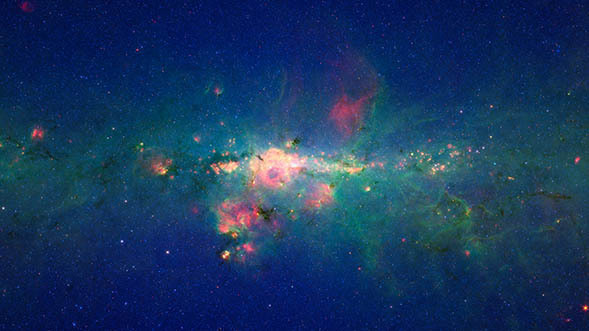
The Multiband Imaging Photometer was one of Spitzer's three science instruments. Like IRAC, it was an imaging camera, but it detected light in the far-infrared, at wavelengths of 24, 70 and 160 microns. MIPS was also capable of simple spectroscopy, like IRS. The detector array for the 24 micron mode was 128 x 128 pixels, and was made of silicon that had been specially treated with arsenic. The 70 micron and 160 micron arrays were much smaller 32 x 32 and 2 x 20 pixels. Both were made of germanium treated with gallium. The 70 micron detector array was also used to take simple spectra from 50 to 100 microns.
MIPS could look at a 5 x 5 arcminute section of the sky at any one time at 24 microns. At 160 microns it observed a smaller patch of sky measuring 0.5 x 5 arcminutes.
The only moving part in MIPS was a scan mirror that was used to efficiently map large areas of sky.



